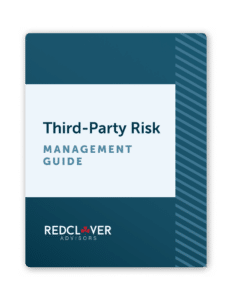Third-Party Risk Management Guide

Did you know that when you entrust third-party vendors with your organization’s personal data, your risk exposure can skyrocket? Security Magazine reports that a staggering 52% of data breaches are attributed to third parties a.k.a. vendors. That’s a hefty number, underscoring the importance of keeping a vigilant eye on who handles your data, their privacy practices, and the risks associated with doing business with them.
That’s why we’ve crafted our Third-Party Risk Management Guide, as your blueprint for establishing a vendor assessment and management program.
Tailored specifically to help you reduce third-party risks and promote compliance with privacy and data protection laws, our step-by-step guide provides clear definitions, important compliance considerations, insights into common questions, and practical actions for immediate implementation.
At Red Clover Advisors, we get it — managing third-party vendors can be a make-or-break factor in your privacy program. We’re here to help you navigate through the process of identifying, assessing, monitoring, and mitigating the risks that come with outsourcing to third-party vendors, including suppliers and service providers.
Grab your complimentary guide today and start simplifying compliance!
Third-party risk management, also known as vendor risk management, taps into the critical roles of privacy and security departments within organizations. Much like how the GDPR popularized the term Data Subject Access Rights in 2018—a term we prefer to call privacy rights due to its more accessible language—the concept of managing risks associated with third-party vendors is known by various names across different sectors and jurisdictions. Some might refer to it as vendor risk management, third-party risk management, processor management, procurement risk management, supplier risk management, or external vendor management.
Regardless of the terminology, the objective is clear. It’s about taking proactive steps to ensure external partnerships do not become liabilities. It’s important to understand the risks, communicate them effectively within your organization, and implement strategies that not only comply with privacy regulations but also align with your commitment to data protection, privacy, and consumer trust.
